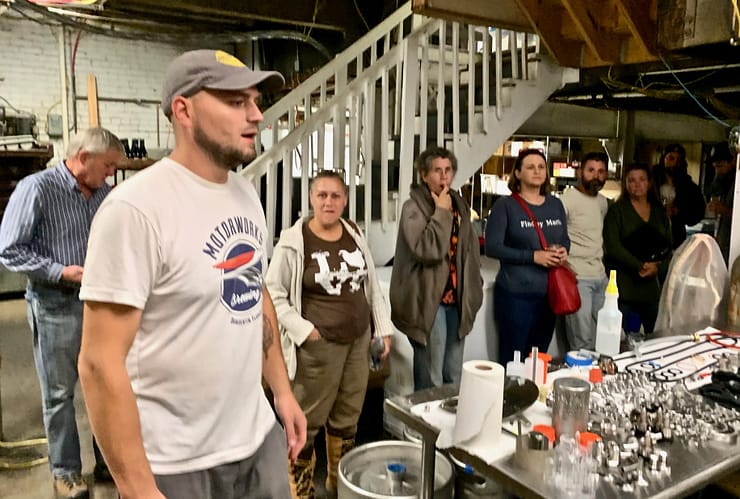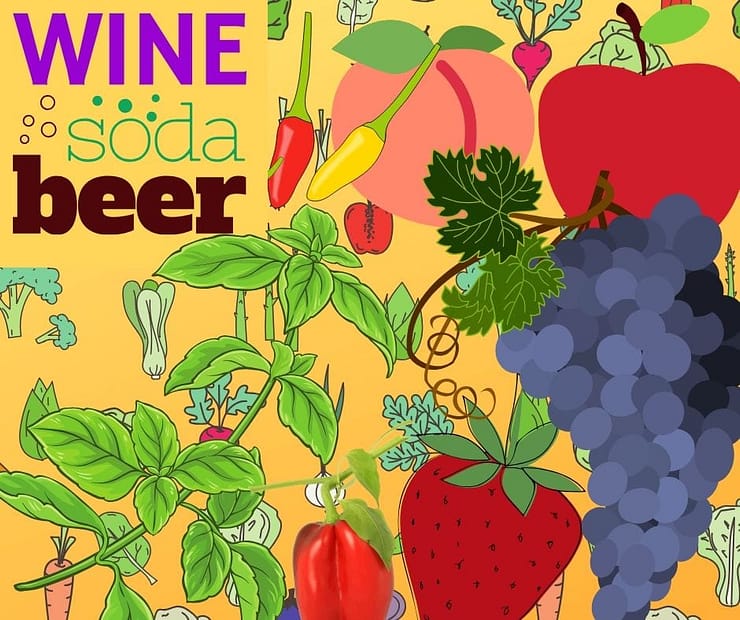
Farm To Bottle Summit 2 at the Root
October 24, 2019
The second edition of the West Virginia Farm to Bottle Summit brought out the need for more marketing and production infrastructure if we want to greatly enhance the use of local ingredients in local beverages. The summit was hosted by The Rambling Root brewery in Fairmont last night.

The discussion between craft beverage producers and small farmers identified some specific needs, produced some solid ideas, and showed we can make progress that benefits all the players.
Growers expressed the need for both more production and marketing system assistance to help them make successful forays into supplying their products to brewers, distillers, and other craft beverage producers. Some examples: Small-scale hop growers need assistance with preparation of their crop for market, including drying and pelletizing. Growers need affordable access to laboratory services to analyze and certify their crops’ chemical content. Small fruit growers need access to facilities that can process and prepare their crops for use in the craft beverage market, such as puréeing and freezing. Foragers need knowledge of exactly which plants beverage producers would interested in.

Small batch beverages often include local ingredients
D.J. Cassel, head brewer at The Rambling Root, said they can use just about any local fruit, herb or other ingredient in their 10-gallon small batch brews. The brewery likes to make small-batch specialty beers that feature local ingredients. Making these small batch beers requires only a pound or two of local ingredients. These kinds of small batch specialty beers are pretty common at WV breweries. They are fun to do and good for overall brewery business, but because of their small size, they are not really financially significant to a local farmer or forager who would supply the ingredients to the brewery. The challenge ahead of us is how to get larger quantities of locally produced ingredients into our beverages.
Differing requirements
In order to use larger quantities of local ingredients in larger production runs (typically 200 gallons and up), breweries and other craft beverage producers often need the ingredients to be more standardized. Aaron Rote, co-owner at Short Story Brewing and president of the WV Craft Brewers Guild, pointed out that this often means lab-tested and certified or partially processed ingredients. His brewery likes to use fruit purees rather than whole fruits and to use pelletized hops rather than whole cone hops. They would prefer to know the content analysis of the grains (protein/starch content), hops (acids/oils content), and fruits (sugar content) they add to their brews.
The requirements that Aaron Rote pointed out are pretty much universal at larger craft beverage producers from my experience. The standardized and lab-certified ingredients give brewers more control over their production processes allowing them the ability to repeat the brew again and again with the same outcome in taste and quality. It makes sense.
For a brewer to step away from using standardized ingredients means leaving the safe zone of predictability and entering the world of varying outcomes and alchemy. Some brewers relish that unpredictability, others, not so much. Some brewers love to walk on the wild side because it can produce some magical results, but from my experience talking to brewers across the county, the larger the batch size, the more the brewer (and their brewery owners) prefer predictability. Both camps can make extremely good beer. They’re just different approaches, different brewing philosophies. I’ve found we have representatives of both types in West Virginia. We need to find ways to support the needs of both camps with local ingredients.

New marketing support systems needed
I think you can see how the widely varying landscape of beverage producer preferences could be a difficult challenge to a small farmer or forager, who may have great ingredient-type products but doesn’t have experience with or insight into the commercial beverage production world.
To tackle this challenge, the discussion at the summit pointed out the need for a marketing service where craft beverage producers could list the types of ingredients they would be interested in purchasing along with the qualitative requirements and quantities needed for each. This would allow growers, foragers, and other local food producers to compare the market needs with the products they could offer. If we could get all our brewers, wineries, cideries, etc. to participate, this would also help us see the places where there are business opportunities for more specialty crop production and places where we might benefit from developing new aggregation efforts or additional processing capabilities.
All in all, the summit helped move the ball forward another step. It was a solid effort by the organizers from the Robert C. Byrd Institute and the West Virginia Food and Farm Coalition. They have already set the date for the next Farm to Bottle meeting: December 5 at the Swilled Dog Cidery in Upper Tract. The first Farm To Bottle Summit took place last March in South Charleston.


